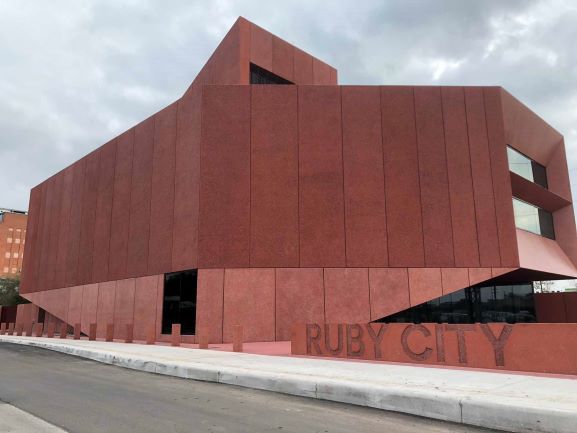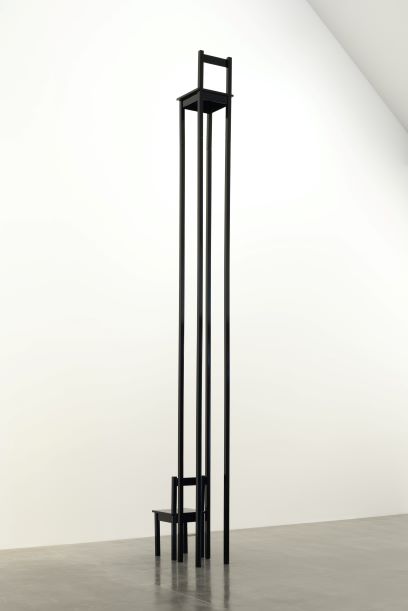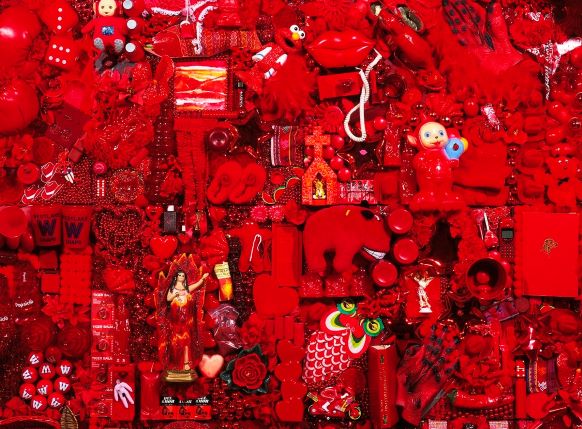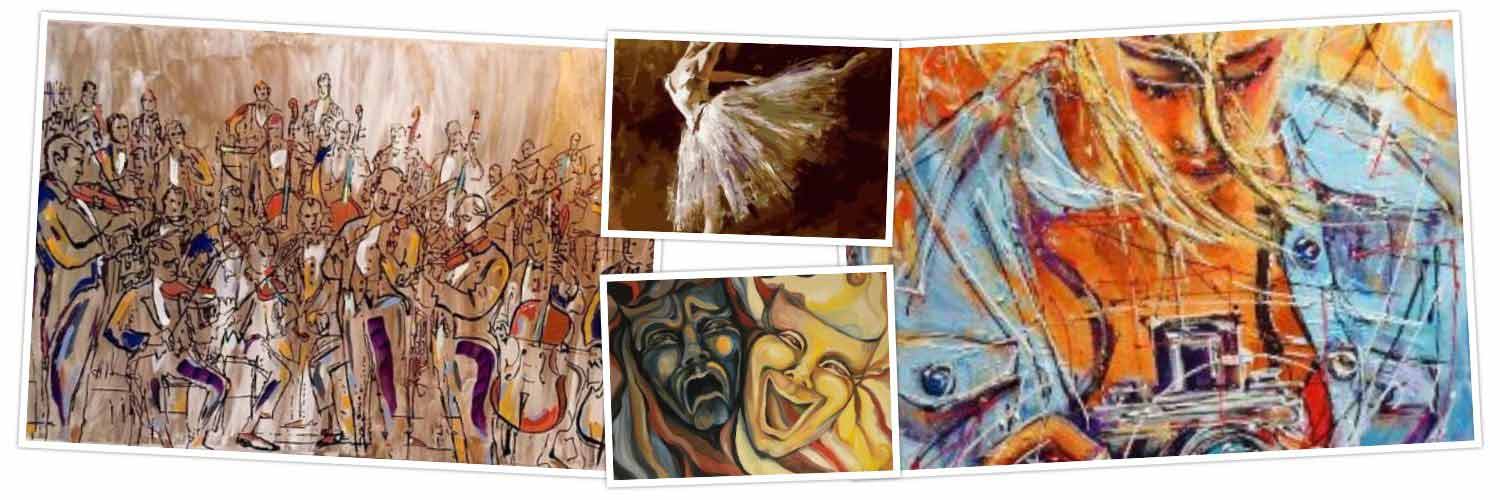Ruby City Ready to Welcome Visitors
By JASMINA WELLINGHOFF, Editor
As a Texan and an art curator, Elyse Gonzales was aware of Linda Pace’s work as a collector and philanthropist, who founded Artpace and the Linda Pace Foundation, but her interest was piqued when she heard that the Foundation was building a “physical location” to house that famed collection. Named Ruby City, due to its red walls, the new building on Camp St. was completed in the fall of 2019, and officially opened in October of that year.

A little more than a year later, Gonzales arrived in San Antonio on Feb. 17, 2020, to take the reins of the new art center as its executive director but, to everyone’s disappointment, Ruby City had to close its doors to the public a couple of weeks later, on March 13. Few San Antonian got a chance to visit it.
So, it’s a big deal for arts lovers and our city as a whole that the $16 million, 14,000-square-foot museum has announced its reopening for June 17. Almost everything inside is still the way it was when Gonzales saw the galleries for the first time during the opening ceremonies.

“I was awed and inspired,” she said the other day when we spoke with her. “What is particularly remarkable about the building is that it is changing as you walk around it. It looks different from different perspectives. And the spaces inside are so fantastic for showing art!”

Ruby City was inspired by a drawing that founder Linda Pace made one morning after seeing a mostly red “chateau” in her dream. British architect David Adjaye was later engaged to translate the dream vision into a contemporary architectural reality, creating a multi-angular structure, with some sharp “turrets” pointing to the sky. As Gonzales said, the building is different from different viewing angles. It is a part of the larger complex on the short street between S. Flores and the San Pedro Creek, which also includes a gallery known only as The Studio, and Chris Park, a well-designed green space named in memory of Pace’s son. Once the San Pedro Creek restoration is complete, the museum and the waterway will form a pleasant urban oasis that’s bound to attract both San Antonians and tourists.
Inside, there are two floors of spacious, well-lit galleries that at present contain only a fraction of the Linda Pace art collection. At the entrance, you’ll be greeted by the founder’s own work, a large piece consisting of tightly packed ordinary objects, died red and displayed as a tableau. Pace believed “that the ordinary can become extraordinary, removed from the familiarity of clutter of every-day life.” She was right. Her assemblages do transcend the utilitarian aspects of the individual objects that comprise them. In fact, that quality of the mundane assuming deeper meaning through the way the artist chose to present it, can be found throughout the exhibit.

Many internationally famous artists are represented here, including New York-based Leonardo Drew, S. Korean artist Do Ho Suh, Serbian artist Marina Abramovich, Kenyan Wangechi Mutu, Maya Lin who designed the Vietnam Veterans Memorial in D.C., German-born Hans Hofmann, English artist Cornelia Parker, Josiah McElheny and many others. San Antonio artists are represented as well, such as Jesse Amado, Cruz Ortiz, Ana Fernandez, Ethel Shipton, the late Chuck Ramirez, and, again, a plurality of others.
The current exhibit is actually the inaugural show, “Waking Dream” that has stayed in place during the lockdown months. In addition, two new installations have recently been added, both inspired by the concept of migration. The 3-D one by Margarita Cabrera, is a beautiful dispersion of small copper butterflies all over the stairwell walls and ceilings. The artist probably wanted to convey something about the importance of preserving the natural order, in which butterflies act as plant pollinators and have a role in the food chain, but her installation is just plain eye-pleasing. The other work dealing with migration is a three-screen film, “Western Union – Small Boats” by Isaac Julien, which focuses on the migration of Africans, who cross the Mediterranean in small boats to get to southern Europe. A special room is set up for the viewing of the film.

But Gonzales and her staff will soon be busy with another exciting project: the Texas Biennial, part of which will be installed in The Studio gallery, mentioned above. Sponsored by Big Medium, and curated by Ryan N. Dennis and Evan Garza, the seventh biennial will involve venues in both San Antonio and Houston this year. In addition to the Ruby City location, parts of the Biennial show will also be exhibited at several other local venues, such the McNay Art Museum, Artpace, and the San Antonio Museum of Art. As far as we know, this is the first time that the Texas Biennial has involved San Antonio. Altogether, 51 artists from across the state and beyond were chosen to take part in this enterprise. It is also the first time, that the event will include international artists who deal with Texas themes.
Other upcoming events are Bubble Fest, a family-focused fun event, that “teaches kids creative ways to make bubbles,” which will take place online as it did last summer. Virtual conversations with artists will continue, as will film screenings, organized in partnership with Blue Star Contemporary. And you’ll have the opportunity to sign up for architecture tours of Ruby City, said Gonzales. But the best thing, of course, is being able to see the art – in person.
So, how does she feel now that life is a big step closer to normal?
“I feel great! Even going back to the office on a regular basis is so uplifting,” she said, her happy voice underlining her words. “And I am so excited to meet our visitors as they come through. It’s nice to chat with people and hear their thoughts. I think Ruby City is such a special place in our community and people really value it.”
——————————————————————————————————————————
Ruby City, 150 Camp St., free admission; safety protocols followed; parking at 1203 S. Flores; www.rubycity.org; The Texas Biennial exhibit at The Studio will open in August.

The longer you live in San Antonio, the more you learn. Ruby City is now on my list as a must see. Thank you for bringing the Ruby City to light.